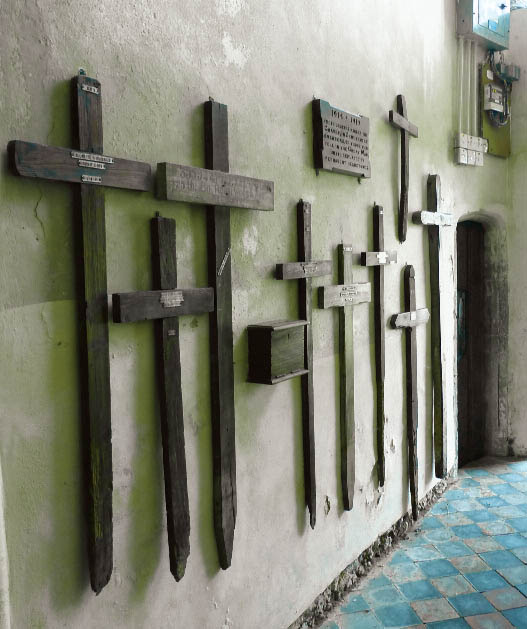
Nine Crosses
They are arranged against the uneven wall by the west door of the church.
Nine crosses, each hewn from rough wood with bright sprays of British Legion
poppies placed upon the crossbeams. The bases have been tapered, the wood
still stained with the mud of the battlefield where the soldiers fell. Lines and
knots rise and fall in the woodgrain, resembling contours on a map.
I’ve read that grave makers such as these were assembled by the trench
carpenters from lumber and nails used to make items such as fences and
packing cases. These nine crosses were put together most likely in haste, but
with care. Stand up close and you can see where the timber at the ends of the
crossbeams has been rounded off, given shape. The name, rank and ID
numbers of the dead men have been painted in black letters by a comrade’s
hand; or else embossed onto tin strips and nailed in place. The epitaphs Killed
in Action, Died of Wounds are also recorded - a reminder that each life was
ended by an act of violence.
Grave marker. Tangible evidence of somebody’s death and in the absence of a
body to mourn, a focus for grief and tears. Relic. Shrine. Memorial. Curiosity.
Something used to light the way from this world to the next.
A booklet lists where the dead men are buried. Beersheba, Cologne, Bethune,
Pas de Calais, Rouen, Somme – those vast military cemeteries scattered along
the battle lines where well-kept graves with formal headstones follow the lie of
the land as it rises and falls, on and on, as if forever…
Nine crosses. Each one a life. Each one a future extinguished.
Look closely and remember them.
JUL I E G A RTON
2 0 1 9
